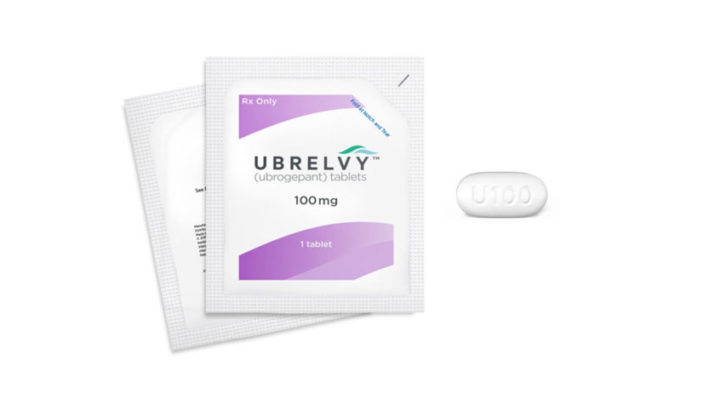By Deborah Jeanne Sergeant
If you suffer from migraine headaches, a new medication recently approved by the FDA may offer help.
Ubrelvy (ubrogepant) tablets are indicated for treatment migraine with or without aura, a visual effect concurring with many migraines.
Unlike preventive migraine medication, patients prescribed to take ubrogepant can take it upon onset of a migraine as needed.
Ubrogepant represents the first drug in the class of oral calcitonin gene-related peptide receptor antagonists that the FDA has approved for treating acute migraine. The FDA announced ubrogepant’s approval Dec. 23.
Dashrath Dulal, pharmacist at Alexander Pharmacy in Rochester, said that this class of medication is becoming popular as a class since its mechanism is different. Many other migraine medications constrict blood vessels, which can contribute to higher risk of stroke and heart attack, unlike the oral calcitonin class.
Though Dulal hasn’t seen demand at his pharmacy for the medication yet since it is so new, he said, “It will be interesting to see how people will respond to it. It may be something for people who have no other choices may try it. It’s something that’s an alternative for people. Something like this might be a good try for them.”
Having many options available can provide better therapies for people who cannot tolerate or do not wish to experience unwanted side effects of their migraine medication.
Physician Melissa Rayhill is a clinical assistant professor of neurology in the Jacobs School of Medicine and Biomedical Sciences at the University at Buffalo. A neurologist with UBMD Neurology, Rayhill specializes in patients suffering from headaches, migraines and post-traumatic headaches.
She said that other medications in the same class as ubrogepant are in current development.
“There are additional new classes of medications that have been recently approved for the treatment of migraine in the last two years, including lasmiditan, the first of the new ‘ditan’ class for symptomatic attack management and CGRP monoclonal antibodies for migraine prevention (erenumab, fremanezumab, and galcanezumab),” she said.
While it seems there’s a lot of migraine medication available for people with migraine, Rayhill said that offering more options benefits patients.
“Not all patients respond to treatments in the same way, so having a new class of medication available to our patients is a big deal,” Rayhill said. “We need better treatments for the millions of patients suffering with migraine in this country alone.”
She said that ubrogepant blocks the activity of pain-transmitting protein. When a patient feels a migraine coming on, taking the medication decreases the inflammatory response caused by the protein. That can stop the migraine.
People who take certain other medications metabolized by the liver should avoid taking ubrogepant, as well as those with liver disease and women who are pregnant or breastfeeding. Participants in two randomized, controlled trials reported nausea, drowsiness, and dry mouth as the most common side effects.
Migraine at Glance
According to the Migraine Research Foundation based New York City, migraine affects 39 million men, women and children in the U.S. and 1 billion worldwide.
• Migraine is the third most prevalent illness in the world.
• Nearly one in four U.S. households includes someone with migraine.
• Twelve percent of the population — including children — suffers from migraine.
• Eighteen percent of American women, 6% of men, and 10% of children experience migraines.
• Migraine is most common between the ages of 18 and 44.
• Migraine tends to run in families. About 90% of migraine sufferers have a family history of migraine.
• Migraine is the 6th most disabling illness in the world.
• Every 10 seconds, someone in the U.S. goes to the emergency room complaining of head pain, and approximately 1.2 million visits are for acute migraine attacks.

